
Linear Regression (Linear Regression) may be the most popular machine learning algorithm. Linear regression is to find a straight line and make this straight line fit the data points in the scatter plot as closely as possible. It attempts to represent the independent variables (x values) and numerical results (y values) by fitting a straight line equation to this data. This line can then be used to predict future values!
The most commonly used technique for this algorithm is the least squares method (Least of squares). This method calculates a line of best fit that minimizes the perpendicular distance from each data point on the line. The total distance is the sum of the squares of the vertical distances (green line) of all data points. The idea is to fit the model by minimizing this squared error or distance.
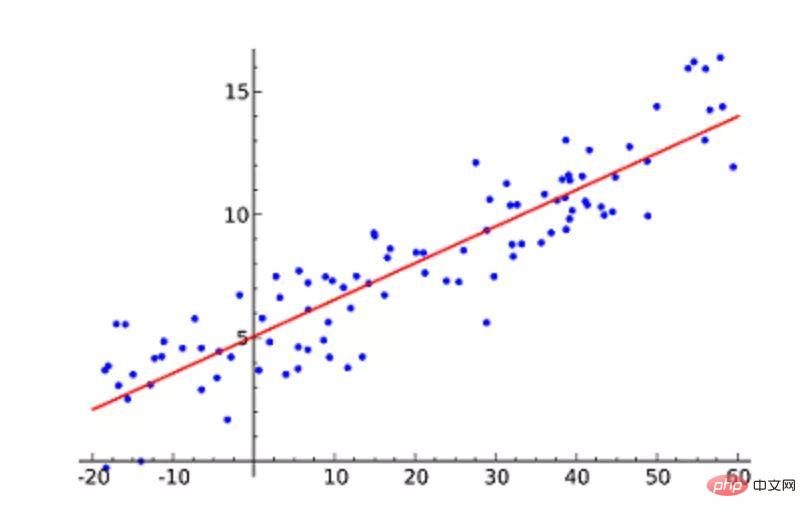
For example, simple linear regression, which has one independent variable (x-axis) and one dependent variable (y-axis).
Logistic regression is similar to linear regression, but it is used when the output is binary (that is, when the result can only have two possible values ). The prediction of the final output is a nonlinear sigmoid function called the logistic function, g().
This logical function maps the intermediate result value to the result variable Y, whose value ranges from 0 to 1. These values can then be interpreted as the probability that Y occurs. The properties of the sigmoid logistic function make logistic regression more suitable for classification tasks.
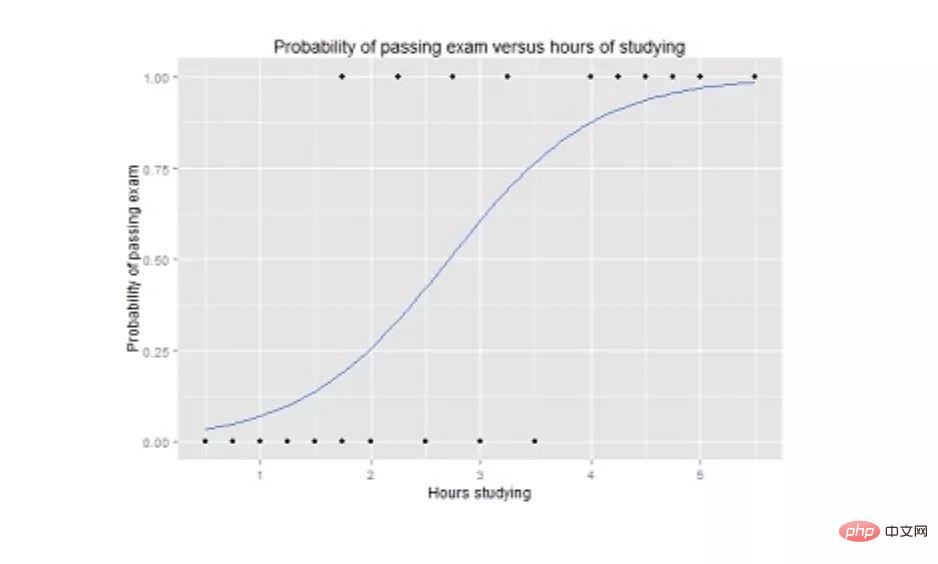
#Logistic regression graph showing the probability of passing the exam as a function of study time.
Decision Trees can be used for regression and classification tasks.
In this algorithm, the training model learns to predict the value of the target variable by learning the decision rule of the tree representation. A tree is composed of nodes with corresponding attributes.
At each node, we ask questions about the data based on the available features. The left and right branches represent possible answers. The final node (i.e. leaf node) corresponds to a predicted value.
The importance of each feature is determined through a top-down approach. The higher the node, the more important its properties are.
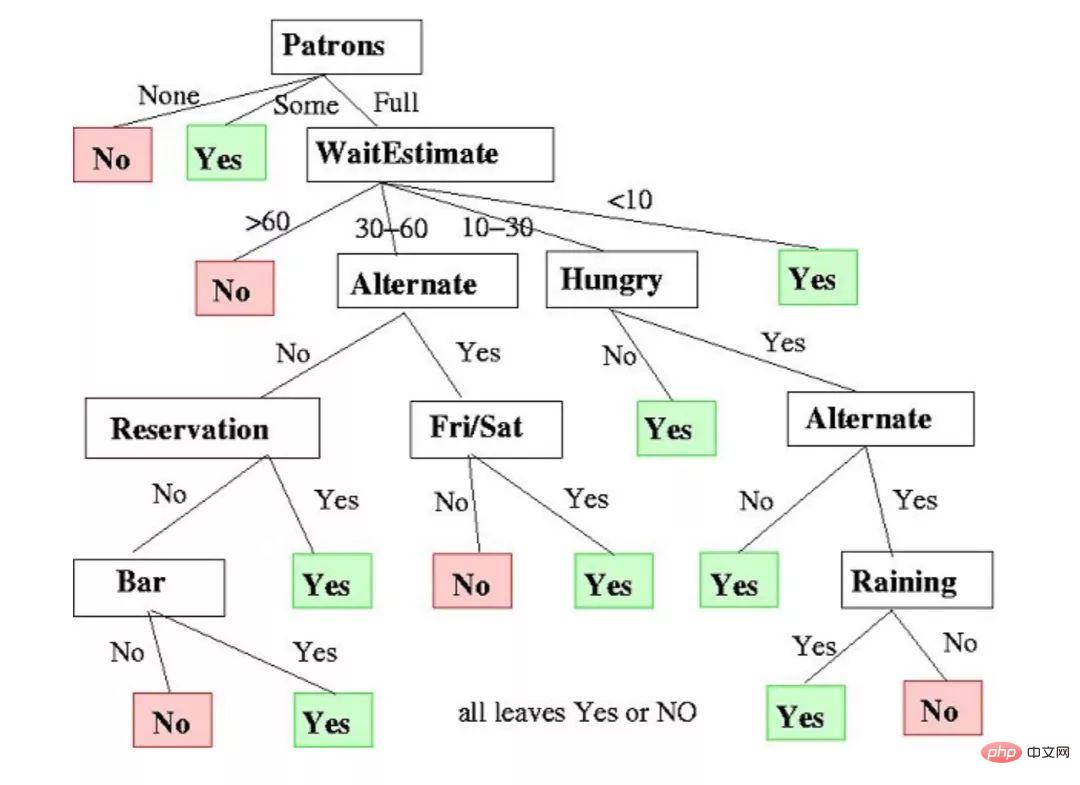
An example of a decision tree for deciding whether to wait in a restaurant.
Naive Bayes (Naive Bayes) is based on Bayes theorem. It measures the probability of each class, the conditional probability of each class given the value of x. This algorithm is used in classification problems and yields a binary yes/no result. Take a look at the equation below.
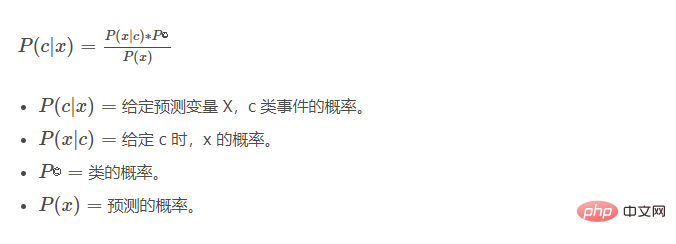
The Naive Bayes classifier is a popular statistical technique that can be used to filter spam!
Support Vector Machine (SVM) is a supervised algorithm for classification problems. A support vector machine attempts to draw two lines between data points with the largest margin between them. To do this, we plot data items as points in n-dimensional space, where n is the number of input features. On this basis, the support vector machine finds an optimal boundary, called a hyperplane, which best separates possible outputs by class labels.
The distance between the hyperplane and the nearest class point is called the margin. The optimal hyperplane has the largest margin that classifies points such that the distance between the nearest data point and the two classes is maximized.
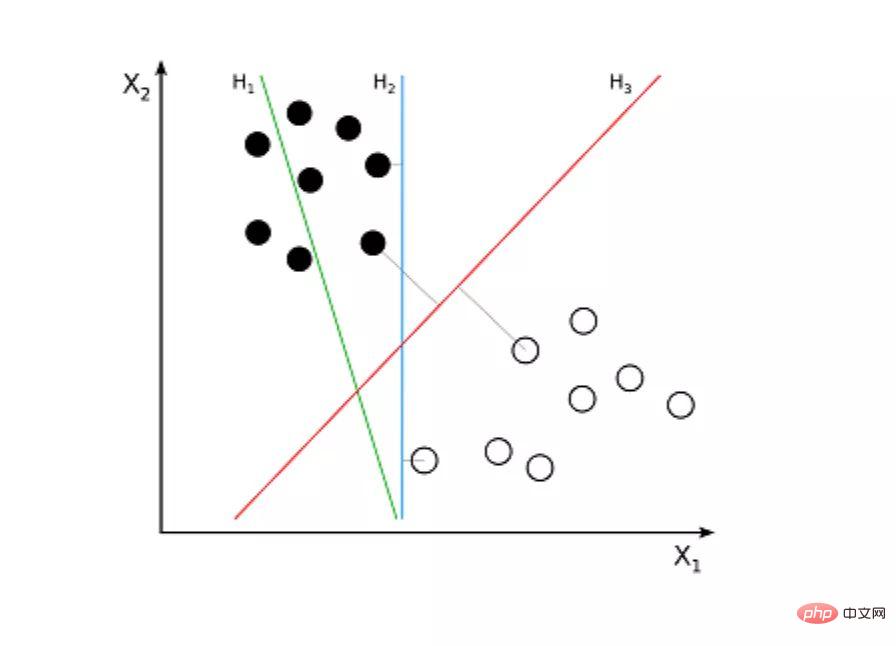
For example, H1 does not separate the two classes. But H2 does, but only with tiny margins. And H3 separates them with the largest margin.
K-Nearest Neighbors (KNN) is very simple. KNN classifies objects by searching the entire training set for the K most similar instances, or K neighbors, and assigning a common output variable to all these K instances. The choice of
K is critical: smaller values may give a lot of noise and inaccurate results, while larger values are infeasible. It is most commonly used for classification, but is also suitable for regression problems.
The distance used to evaluate the similarity between instances can be Euclidean distance, Manhattan distance or Minkowski distance. Euclidean distance is the ordinary straight-line distance between two points. It is actually the square root of the sum of the squared differences in point coordinates.
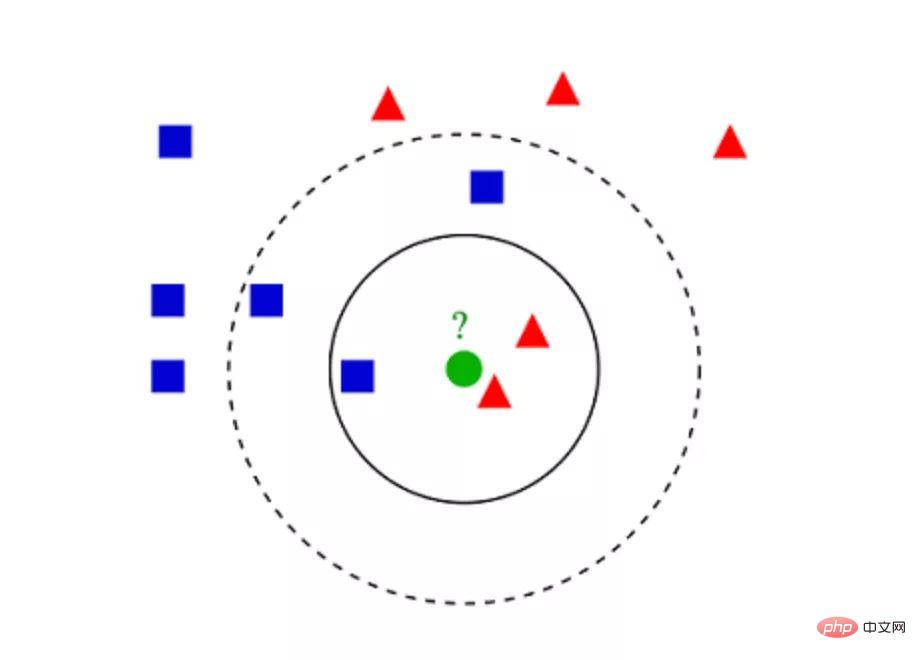
▲KNN classification example
K-means (K-means) is performed on the data set Classified to cluster. For example, this algorithm can be used to group users based on purchase history. It finds K clusters in the dataset. K-means is used for unsupervised learning, so we only need to use the training data X, and the number of clusters we want to identify K.
This algorithm iteratively assigns each data point to one of K groups based on the characteristics of each data point. It selects K points for each K-cluster (called centroids). Based on similarity, new data points are added to the cluster with the closest centroid. This process continues until the center of mass stops changing.
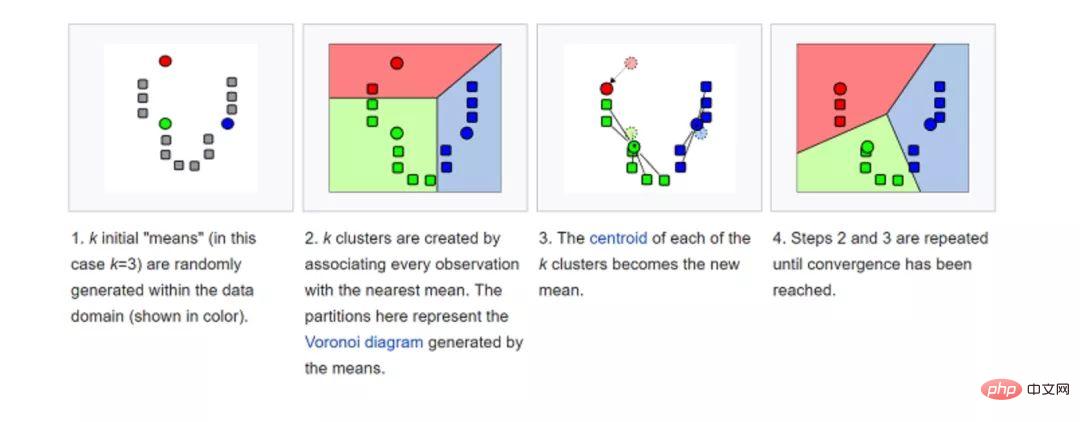
Random Forest (Random Forest) is a very popular ensemble machine learning algorithm. The basic idea of this algorithm is that the opinions of many people are more accurate than the opinions of one individual. In a random forest, we use an ensemble of decision trees (see Decision Trees).
To classify new objects, we take a vote from each decision tree and combine the results before making the final decision based on a majority vote.

#During the training process, each decision tree is constructed based on the bootstrap samples of the training set.
During the classification process, decisions about input instances are made based on majority voting.
Machine learning problems have become more complex due to the sheer volume of data we are able to capture today. This means training is extremely slow and finding a good solution is difficult. This problem is often called the "curse of dimensionality".
Dimensionality reduction attempts to solve this problem by combining specific features into higher-level features without losing the most important information. Principal Component Analysis (PCA) is the most popular dimensionality reduction technique.
Principal component analysis reduces the dimensionality of a data set by compressing it into low-dimensional lines or hyperplanes/subspaces. This preserves as much of the salient features of the original data as possible.
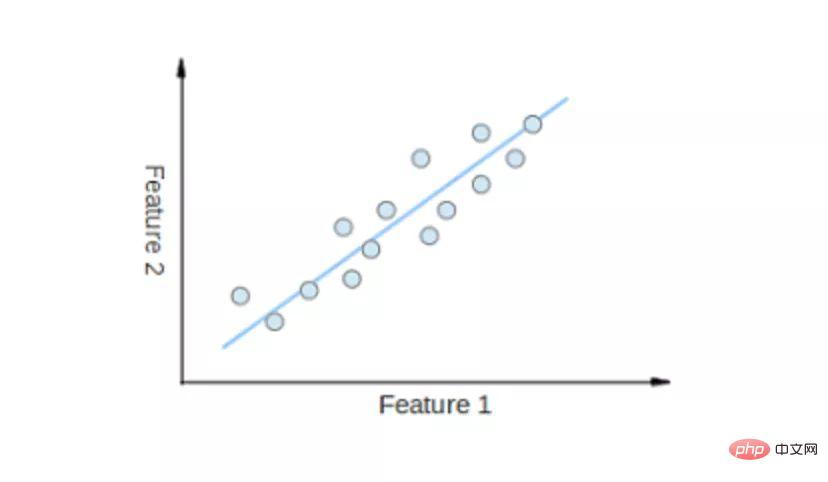
#An example of dimensionality reduction can be achieved by approximating all data points to a straight line.
Artificial Neural Networks (ANN) can handle large and complex machine learning tasks. A neural network is essentially a set of interconnected layers composed of weighted edges and nodes, called neurons. Between the input layer and the output layer, we can insert multiple hidden layers. Artificial neural networks use two hidden layers. Beyond that, deep learning needs to be dealt with.
The working principle of artificial neural networks is similar to the structure of the brain. A group of neurons is given a random weight to determine how the neuron processes the input data. The relationship between input and output is learned by training a neural network on input data. During the training phase, the system has access to the correct answers.
If the network cannot accurately recognize the input, the system will adjust the weights. After sufficient training, it will consistently recognize the correct patterns.
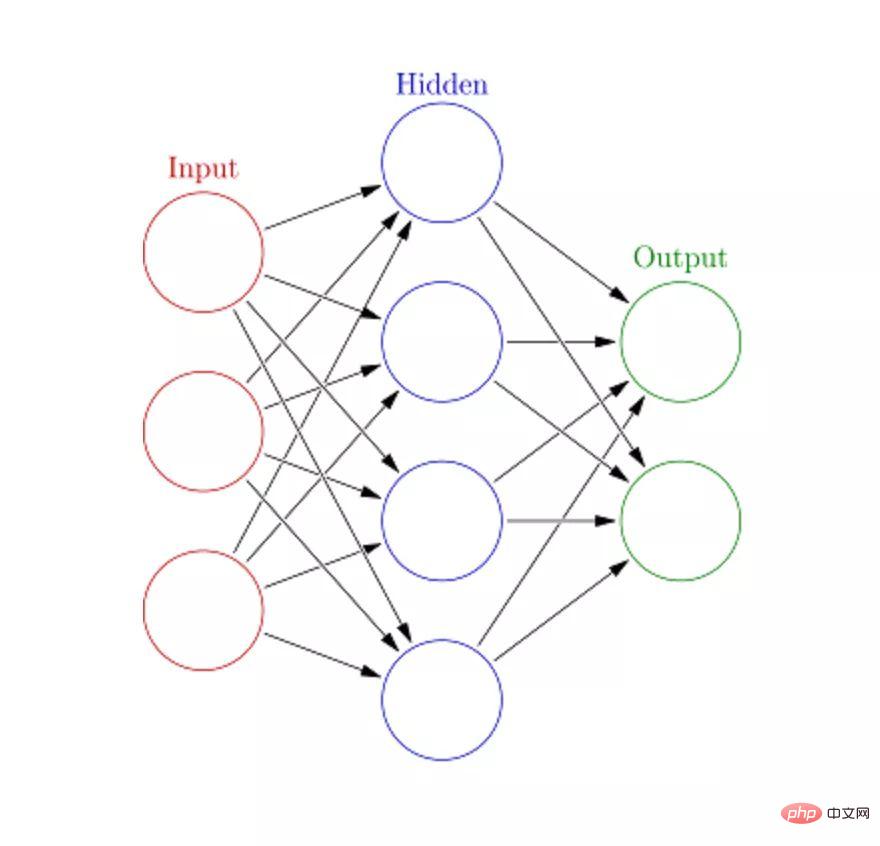
Each circular node represents an artificial neuron, and the arrows represent connections from the output of one artificial neuron to the input of another.
What’s next? Now, you’ve learned the basics of the most popular machine learning algorithms. You're ready to learn more complex concepts and even implement them through in-depth, hands-on practice. If you want to learn how to implement these algorithms, Educative's Grokking Data Science course applies these exciting theories to clear, real-world applications.
Wish you a happy study!
The above is the detailed content of The top ten algorithms you must know and know about machine learning!. For more information, please follow other related articles on the PHP Chinese website!
 Page replacement algorithm
Page replacement algorithm
 How to use a few thousand to make hundreds of thousands in the currency circle
How to use a few thousand to make hundreds of thousands in the currency circle
 What are the five types of aggregate functions?
What are the five types of aggregate functions?
 How to use the Print() function in Python
How to use the Print() function in Python
 How to close app resource library
How to close app resource library
 Website dead link detection method
Website dead link detection method
 What to do if the documents folder pops up when the computer is turned on
What to do if the documents folder pops up when the computer is turned on
 word to ppt
word to ppt




